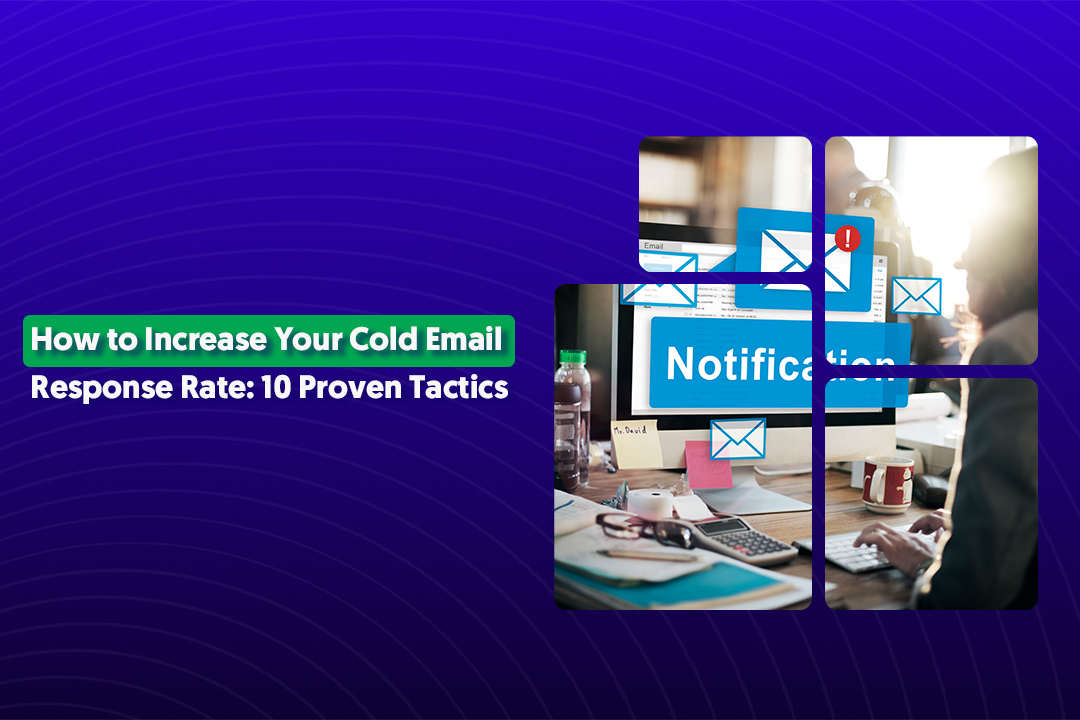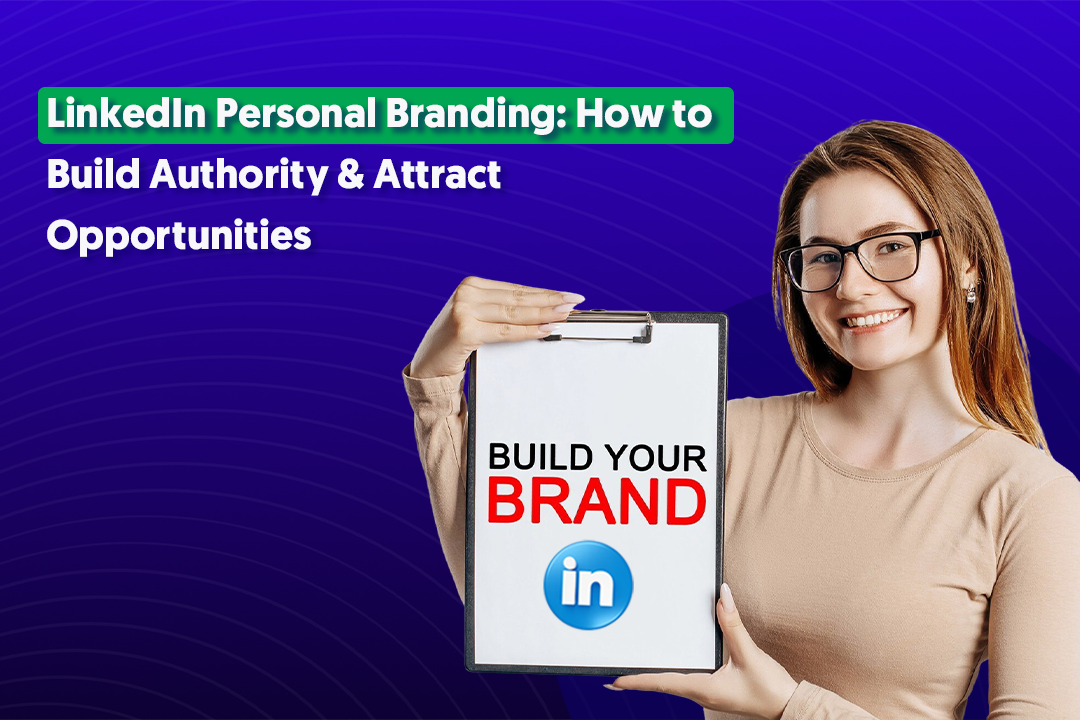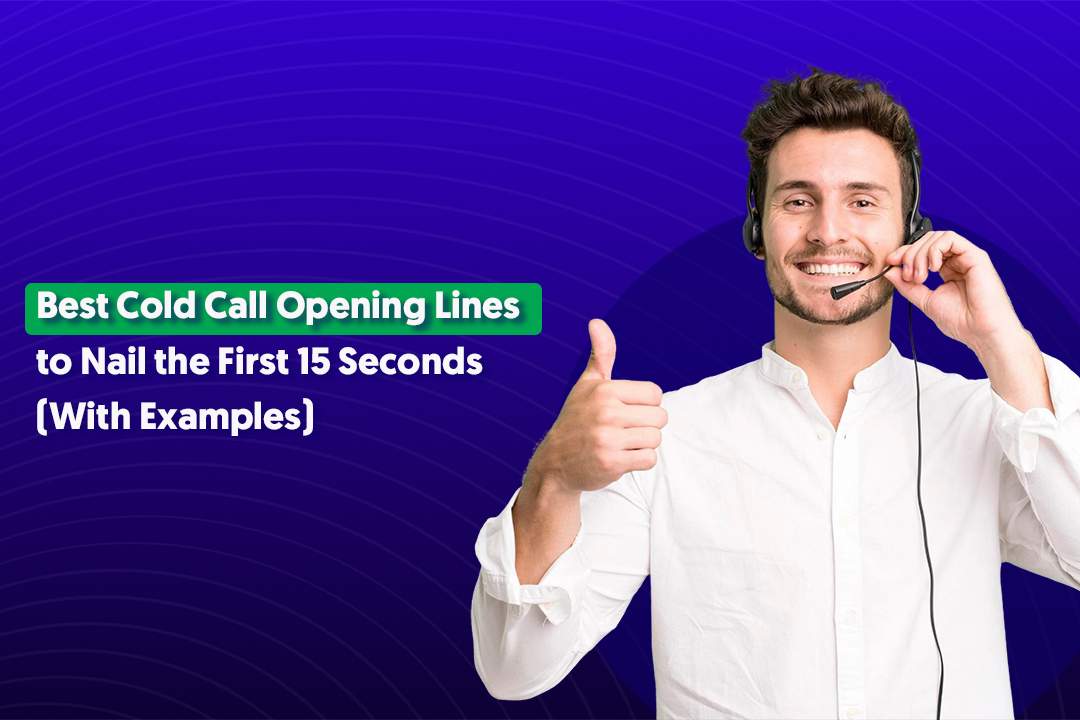Table of Content
Key Takeaways
- B2B video marketing gets 5x more engagement on LinkedIn than text posts.
- Personalized video messages in outreach get 3-5x higher response rates than text alone.
- You don't need fancy equipment. Your phone camera, Loom, and consistency beat expensive production every time.
- Track meetings booked and pipeline influenced, not just views and likes.
- Short-form videos (30-90 seconds) build awareness, long-form content (3-10 minutes) builds authority.
Have you noticed your LinkedIn feed isn't what it used to be. Text posts and static images? They're getting lost in the noise. But videos? They're stopping thumbs mid-scroll.
Here's something that'll grab your attention: B2B video marketing content gets 5x more engagement than other post formats on LinkedIn. Yeah, you read that right. Five times.
We've watched this shift happen in real-time. Decision-makers aren't just reading about solutions anymore—they want to see them in action. They want to meet the people behind the pitch.
And LinkedIn's algorithm? It's playing favorites with video content like never before.
Here's why this combo is a game-changer: B2B video marketing builds something you can't fake—trust.
When prospects see your face, hear your voice, and watch you solve real problems, you're not just another cold outreach message. You're a real person with real expertise.
And when you pair that authenticity with LinkedIn—the platform where 4 out of 5 users drive business decisions—you've got yourself a lead generation machine that actually works.
So if you've been sleeping on video for your LinkedIn outreach, it's time to wake up.
Let's break down exactly how to use B2B video marketing to turn connections into conversations and prospects into pipeline.

Why B2B Video Marketing Matters — Key Statistics & Trends
Look, we could tell you video is important. Or we could just show you the numbers that prove it.
The State of B2B Video in 2025
B2B video marketing statistics paint a pretty clear picture: video isn't a "nice-to-have" anymore—it's table stakes.
According to Wyzowl's State of Video Marketing 2024, 91% of businesses now use video as a marketing tool that drives great ROI..
The money's following the results too. Companies are increasing their video budgets year over year, with most B2B brands now allocating 20-40% of their content marketing budget specifically to video production and distribution.
LinkedIn Video Stats That Matter
LinkedIn's own data shows why video works so well on their platform:
- Video posts get 3x more engagement than text-only posts.
- Native LinkedIn videos get 5x more engagement than shared links.
The Kicker: LinkedIn's algorithm actively prioritizes video content in feeds. When you post a native video, you're not just creating better content—you're buying better visibility.
Lead Generation Impact
This is where B2B video marketing statistics get really interesting for outreach and lead gen:
- Conversion rates jump significantly: Landing pages with video see conversion rates increase by up to 80% compared to pages without video.
- Trust builds faster: Above 50% of buyers prefer watching a short video to learn about a product or service over reading text, email, or even hopping on a sales call (Demand Gen Report).
- Engagement time increases: Prospects spend 88% more time on websites with video content. More time = more trust = warmer leads.
- Click-through rates improve: Email campaigns that include video see click-through rates increase by 200-300%. That's not a typo.
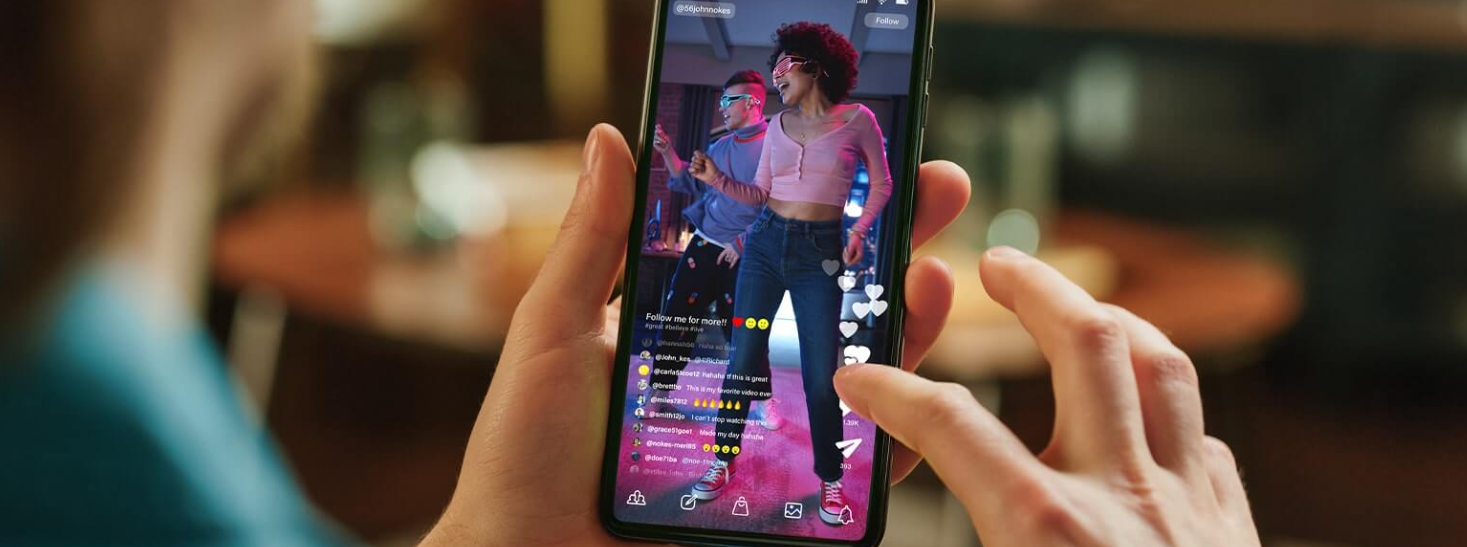
What's Actually Working in 2025
Not all video is created equal. Here's what the data says about formats:
Short-form is winning for awareness (30-90 seconds). LinkedIn users prefer quick, digestible content that gets to the point fast. Think problem-solution-CTA, not documentary.
Long-form builds authority (3-10 minutes). When prospects are already interested, they'll watch detailed explanations, case studies, and thought leadership content.
Live video gets 24x more engagement than pre-recorded according to LinkedIn's own benchmarks. The authenticity factor is real.
Feed videos outperform Stories for B2B. Unlike Instagram or Facebook, LinkedIn's professional audience still prefers feed content they can save and reference later.
The bottom line? B2B video content marketing is becoming the primary way decision-makers consume information before they ever talk to sales.
Building a B2B Video Marketing Strategy for LinkedIn
Here's the truth: posting random videos and hoping for leads is not a strategy. Let's fix that.
Start With What You Actually Want to Achieve
Before you hit record, get clear on your goals. Your B2B video marketing strategy should answer one simple question: what does success look like?
- Awareness goals: Building brand recognition, establishing thought leadership, growing your follower base. Metric to watch: impressions, reach, and follower growth rate.
- Lead capture goals: Getting prospects to raise their hands—downloads, sign-ups, meeting bookings. Metric to watch: click-through rates, form fills, and cost per lead.
- Pipeline goals: Moving leads through your funnel toward actual revenue. Metric to watch: qualified opportunities created, pipeline value influenced.
- Authority goals: Becoming the go-to expert in your space. Metric to watch: engagement rate, shares, inbound messages from decision-makers.
Pick 1-2 primary goals. Trying to do everything dilutes your results.
Know Exactly Who You're Talking To
Generic videos get generic results. Your B2B video content marketing needs to speak directly to real people with real problems.
Map out your ideal viewer:
- What's their job title? (VP of Sales? Marketing Director? Founder?)
- What industry are they in? (SaaS? Manufacturing? Professional services?)
- What keeps them up at night? (Not enough leads? Low conversion rates? Inefficient processes?)
- Where are they in the buying journey? (Just became aware of the problem? Actively comparing solutions? Ready to buy?)
The more specific you get, the more your videos will resonate. A video for a startup founder sounds completely different than one for an enterprise procurement manager.
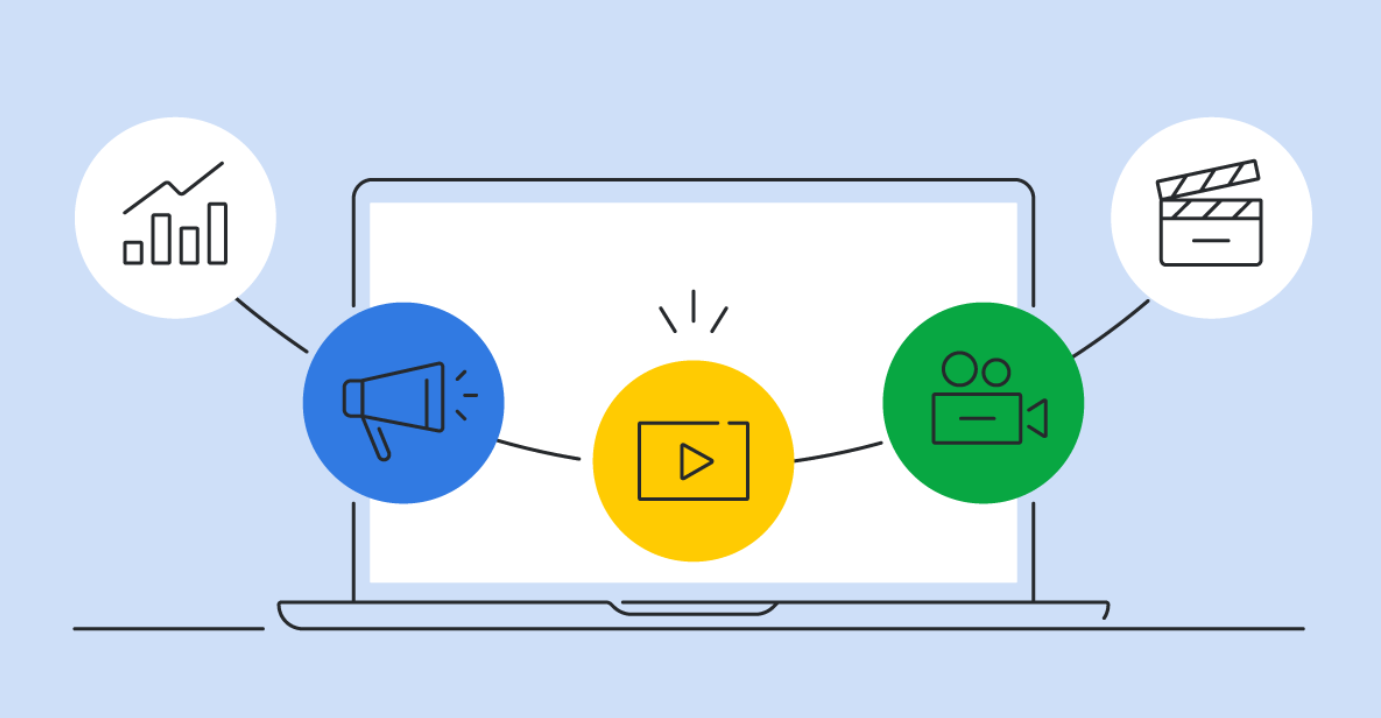
Pick Your Video Formats (And Match Them to Goals)
Different formats serve different purposes. Here's what actually works on LinkedIn:
- Micro-videos (15-60 seconds): Quick tips, stats that surprise, hot takes on industry trends. Perfect for awareness and algorithm love.
- Case study videos (2-5 minutes): Real client results, problem-solution-outcome stories. These build credibility and move prospects toward consideration.
- Product demos (3-7 minutes): Show don't tell. Walk through your solution solving a specific pain point. Great for mid-funnel prospects.
- Customer testimonials (1-3 minutes): Let your clients do the selling. Nothing builds trust faster than a happy customer explaining their results.
- Live Q&A sessions (20-45 minutes): Interactive, real-time engagement. LinkedIn notifies followers when you go live, giving you instant audience access.
Map Video to Your LinkedIn Funnel
A solid B2B video marketing strategy matches content to where prospects are in their journey:
- Top of funnel (Awareness): Short, snackable videos in your feed. Problem-focused content that makes people stop scrolling. "Here's why your outreach isn't working" beats "Here's why our tool is great."
- Middle of funnel (Consideration): Longer, meatier content. Case studies showing how you've solved similar problems. Webinar recordings diving deep into methodology. Educational series that demonstrate expertise.
- Bottom of funnel (Conversion): Personalized video messages sent via LinkedIn DM. Custom demo videos addressing specific pain points mentioned in conversations. Video invitations to book time with your team.

Learn More About: B2B LinkedIn Funnel
Where to Actually Post Your Videos
LinkedIn gives you options. Use them strategically:
- Personal LinkedIn profile feed posts: Highest organic reach. LinkedIn's algorithm favors personal accounts over company pages. This is your primary distribution channel.
- Company page posts: Lower organic reach but important for brand consistency and retargeting. Share the same content here after posting from personal profiles.
- LinkedIn Live: 24x more engagement than pre-recorded. Use for product launches, AMAs, weekly tips series, or major announcements.
- LinkedIn Stories: Honestly? Skip these for B2B. Feed posts outperform Stories for professional audiences who want to save and reference content later.
- InMail with video: Personalized video messages get 3x higher response rates than text-only InMails. Use sparingly for high-value prospects.
Your Production & Distribution Checklist
You don't need a production studio. You need a system. Here's your B2B video marketing strategy execution plan:
- Scripting: Outline key points but don't read word-for-word. Bullet points > teleprompter. Aim for conversational, not corporate.
- Recording: Phone cameras work fine. Clean audio matters more than 4K video. Natural lighting beats ring lights. Look at the camera like you're talking to a friend.
- Editing: Cut the fluff. First 3 seconds determine if people keep watching. Add captions—85% of LinkedIn video is watched without sound.
- CTAs: Tell people what to do next. "Drop a comment," "Link in profile," "DM me for the full framework." One clear CTA per video.
- Posting schedule: Consistency beats perfection. 2-3 quality videos per week outperform daily mediocre content. Best times: Tuesday-Thursday, 8-10am or 12-1pm EST.
- Repurposing: One long video becomes 5 short clips, 10 quotes for graphics, and a LinkedIn article. Work smarter, not harder.
The best B2B video content marketing strategy is the one you'll actually stick with. Start small, test what works, then scale what's getting results.

How to Use Video in LinkedIn Outreach & Lead Generation
Alright, let's get tactical. You've got your strategy. Now let's talk about how to actually use B2B video content marketing to book meetings and generate real leads.
Personalized Video Messages That Actually Get Responses
Generic copy-paste messages get ignored. Personalized video messages? They get replies.
Here's the play: Record a quick 30-60 second video addressing your prospect by name, mentioning something specific about their company or recent post, and offering genuine value. No pitch. No "just checking in." Real insight or help.
What this looks like in practice:
- "Hey Sarah, saw your post about struggling with outbound response rates. We helped a similar fintech company increase replies by 40% using this framework..."
- "Hi Mike, noticed your team just raised Series B. Here's what we learned helping three other companies scale outreach post-funding..."
Use Loom, Vidyard, or even LinkedIn's native video messaging. The medium matters less than the personalization.
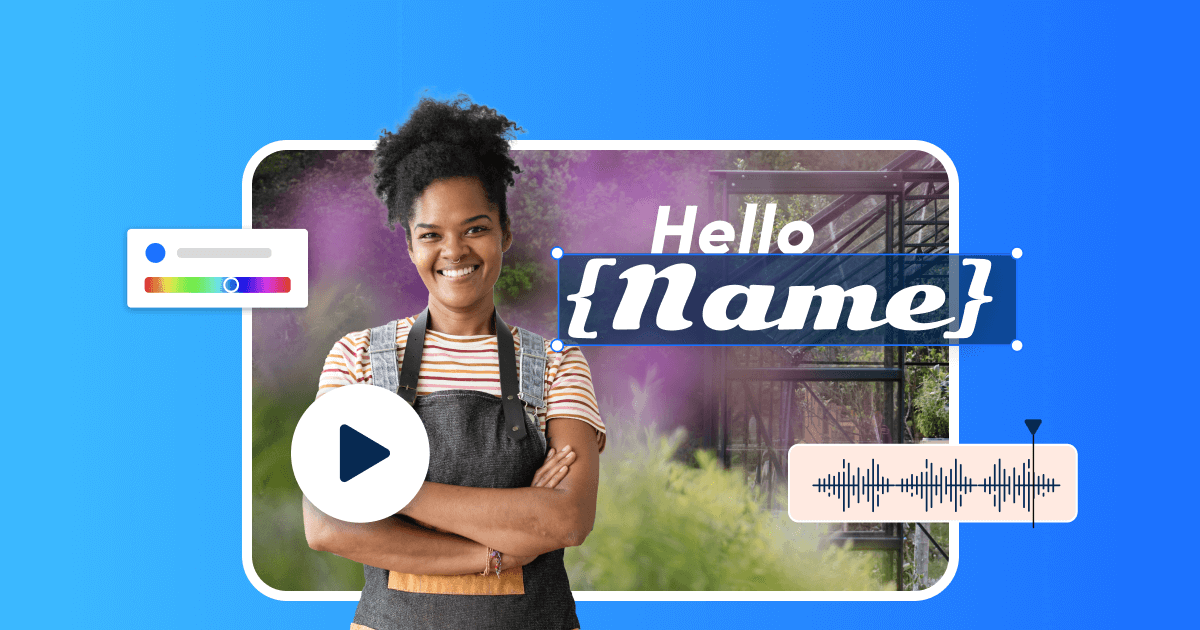
Video Content That Generates Inbound Leads
The best outreach is the kind you don't have to do. When your B2B video content marketing is working, prospects come to you.
- Educational content that solves real problems: Create videos answering the questions your ideal clients are already asking. "How to fix low LinkedIn acceptance rates," "Why your cold emails aren't working," "The biggest mistake B2B companies make with outreach."
- Behind-the-scenes content: Show your process, share your wins and losses, talk about what you're learning. Transparency builds trust faster than polish.
- Client results and case studies: Let your work speak for itself. "Here's how we helped Company X book 47 meetings in 60 days" is more convincing than any pitch deck.
Include clear CTAs: "Want the full framework? Link in my profile," or "DM me 'outreach' and I'll send you the template."
Video Follow-Ups That Move Deals Forward
Someone accepted your connection request? Send a quick thank-you video instead of a text message. You'll instantly stand out.
Had a discovery call? Send a personalized recap video summarizing key points and next steps. It shows you were listening and keeps momentum going.
Prospect went dark? A "just thinking about you" video referencing your previous conversation can resurrect dead deals.
It's way harder to ghost someone when they've put in the effort to record something just for you.
LinkedIn Video Ads for Targeted Lead Gen
Organic is great. Paid amplifies what's already working.
- B2B video content marketing through LinkedIn's ad platform lets you target with laser precision: job titles, company size, industries, seniority levels. Your video gets in front of exactly who you want to reach.
- Sponsored video content: Boost your best-performing organic videos to expand reach beyond your network. Start with content that's already proven to engage—don't boost and hope.
- Video ads in InMail: Conversation Ads with video get 2x higher click-through rates than text-only. Use these for event invitations, content offers, or demo requests.
- Retargeting sequences: Show different videos to people based on what they've already watched. Someone watched 75% of your "problem" video? Show them your "solution" video next.
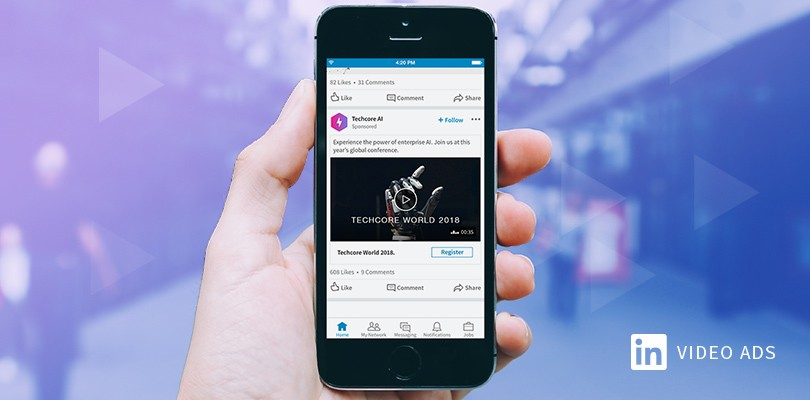
Combining Video With Multi-Channel Outreach
Here's where B2B video content marketing really shines: it multiplies the effectiveness of everything else you're doing.
The sequence that works:
- Connect on LinkedIn with a personalized note (no video yet—don't overwhelm).
- After acceptance, send a short video message offering value.
- Share relevant video content in your feed that addresses their pain points.
- Follow up via email with a different video testimonial or case study.
- If engaged, send personalized video demo or meeting invite.
Each touchpoint reinforces the others. Your video content makes your written messages more credible. Your written messages give context to your videos.
Measuring What Actually Matters
You can't improve what you don't measure. Track these metrics for your B2B video content marketing:
- Engagement metrics: View rate, watch time percentage, comments, shares. These tell you if your content resonates.
- Response metrics: How many video messages get replies? What's your acceptance rate before vs. after adding video? These tell you if your outreach is working.
- Conversion metrics: Meeting bookings, demo requests, content downloads from video CTAs. These tell you if you're generating actual pipeline.
- Pipeline metrics: How much revenue can be attributed to video touchpoints? What's the close rate for deals that involved video vs. those that didn't?
Most people obsess over vanity metrics like total views. Smart teams focus on metrics tied to revenue.
The Reality Check
Will every video go viral? No. Will every prospect respond? Definitely not.
But here's what we know: when you consistently show up with valuable B2B video content marketing, you build recognition, trust, and authority that text alone can't match.
The companies crushing it with LinkedIn video aren't the ones with the best cameras or the slickest editing.
They're the ones showing up consistently, providing real value, and making genuine human connections at scale.
Video Content Ideas for B2B on LinkedIn
Staring at a blank camera wondering what to record? We've got you covered. Here are five B2B video marketing formats that actually work—with exact frameworks you can steal.
Micro-Case Study Videos (2-3 Minutes)
This is your credibility builder. Real client, real problem, real results.
The framework:
- 0-15 seconds: Hook with the result. "We helped a SaaS company book 47 qualified meetings in 60 days. Here's how."
- 15-45 seconds: The problem. What was broken? What did they try that didn't work?
- 45-90 seconds: Your solution. What specific approach or strategy did you use? Keep it high-level, not salesy.
- 90-120 seconds: The outcome. Numbers matter. Meetings booked, pipeline generated, conversion rates improved.
- 120+ seconds: The lesson. What can viewers apply to their own situation?
CTA suggestion: "Want to see the full breakdown? Link in my profile" or "DM me 'case study' for the complete strategy deck."
Best posting time: Tuesday or Wednesday, 8-10am EST—catches people starting their workday looking for solutions.
Pro tip: Get permission to name the client if possible. "Anonymous B2B company" doesn't hit as hard as "Here's what we did for [recognizable brand]."
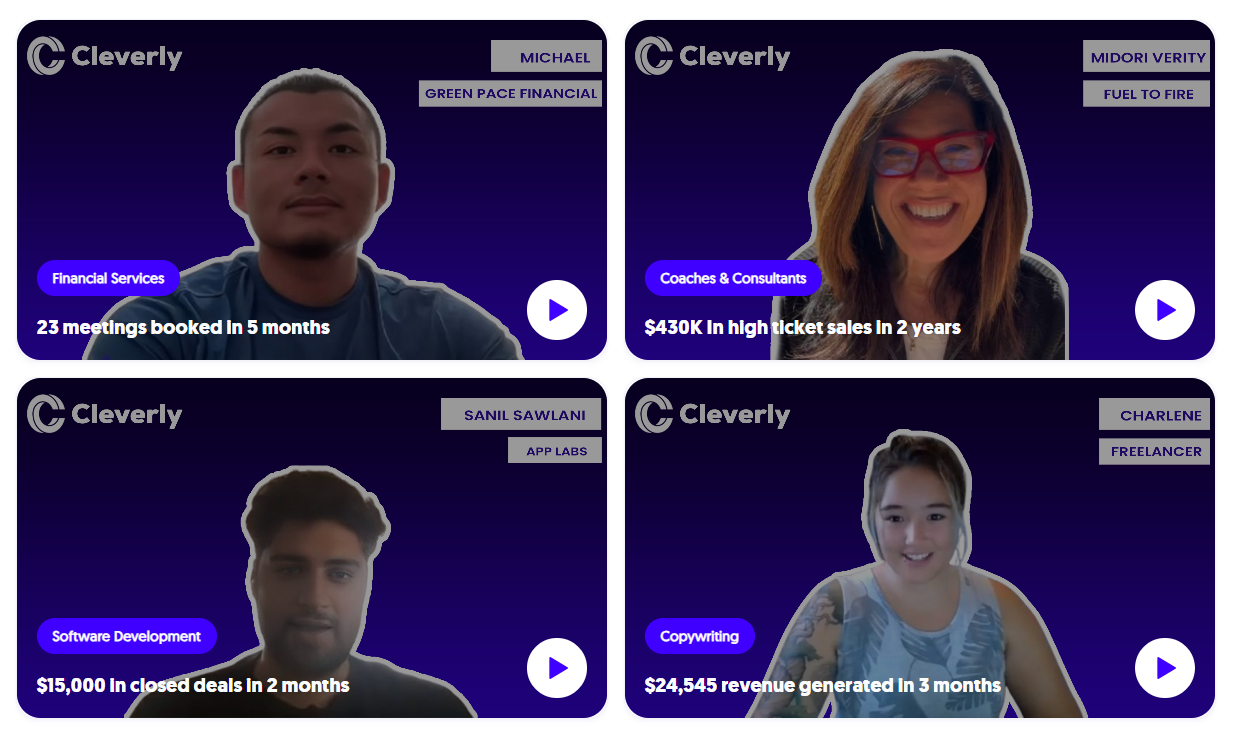
Behind-the-Scenes/Team Culture Videos (1-2 Minutes)
People buy from people, not companies. Show them who you actually are.
Content ideas that work:
- Team meetings where you're solving a client problem (with details obscured)
- "Day in the life" of your role—the real version, not the highlight reel
- How you handle mistakes or setbacks (vulnerability builds trust)
- Office debates about industry trends or best practices
- Celebrating team wins—new client, product launch, company milestone
The framework:
- First 5 seconds: Show something visually interesting or unexpected.
- Next 30-45 seconds: Give context—what are we watching and why does it matter?
- Final 15-30 seconds: Connect it back to your audience—what can they learn or take away?
CTA suggestion: "What does your team culture look like? Drop a comment" or "Follow for more unfiltered looks at B2B life."
Best posting time: Thursday or Friday afternoon, 12-2pm EST—people are winding down and more receptive to lighter, human content.
Pro tip: These videos don't need perfect lighting or editing. Authenticity beats production quality for this format. Shoot on your phone.
Live Q&A/AMA Sessions (20-45 Minutes)
LinkedIn Live gets 24x more engagement. Use it to build community and authority simultaneously.
How to structure your B2B video marketing Live session:
- Pre-promote: Post 2-3 days before announcing the topic and time. Ask followers to submit questions in advance.
- Opening (2-3 minutes): Intro yourself, state the topic, explain the format. "For the next 30 minutes, I'm answering everything about cold email deliverability."
- Main content (30-35 minutes): Work through submitted questions plus live comments. Answer thoroughly but concisely.
- Closing (5 minutes): Recap key takeaways, give final CTA, thank attendees.
Topics that crush:
- "AMA: Everything about [your expertise area]"
- "Hot takes on [industry trend]—let's debate"
- "Live audit: Submit your [LinkedIn profile/email sequence/whatever] and I'll review it"
- "Behind the numbers: How we actually achieved [specific result]"
CTA suggestion: "Want the replay + bonus content? Link in my profile" or "Let's continue this conversation—follow for next week's session."
Best posting time: Tuesday or Wednesday, 11am-1pm EST—midday when people take breaks and can tune in live.
Pro tip: Repurpose the recording. Clip the best answers into 5-10 short videos for the next two weeks. One Live = weeks of content.

Quick Tip Videos (15-45 Seconds)
These are your scroll-stoppers. Fast, actionable, impossible to ignore.
The framework:
- Seconds 1-3: Pattern interrupt. Bold statement, surprising stat, or provocative question. "Your LinkedIn headline is killing your outreach. Here's why."
- Seconds 4-30: The actual tip. One specific, actionable thing they can implement today.
- Seconds 31-45: Quick recap and CTA. "Try this today. Follow for more tips like this."
Content angles:
- "The [number] mistake killing your [desired outcome]"
- "Here's what nobody tells you about [common challenge]"
- "I tested [X strategy] for 90 days—here's what happened"
- "Stop doing [common practice]. Do this instead."
CTA suggestion: Keep it simple. "Save this," "Follow for more," or "Try it and let me know what happens."
Best posting time: Monday morning 7-9am EST or Thursday 4-6pm EST—beginning and end of work week when people are scrolling more.
Pro tip: Batch record these. Set aside one hour, outline 10 tips, record them all. That's your content for 2-3 weeks of B2B video marketing.
Product Demo Walkthroughs (3-7 Minutes)
For prospects who are past awareness and into consideration mode. Show them exactly how you solve their problem.
The framework:
- 0-20 seconds: State the specific problem this demo addresses. "If you're struggling to track which prospects opened your emails, watch this."
- 20 seconds-1 minute: Quick overview of what they'll see. Set expectations.
- 1-5 minutes: The actual walkthrough. Focus on benefits, not features. "This dashboard shows you exactly which prospects are engaged, so you know who to follow up with first" beats "This is the analytics tab."
- 5-7 minutes: Next steps. How do they get access? What happens if they book a call?
What to show:
- Solving one specific use case, not your entire product
- Real data or realistic examples (not lorem ipsum)
- The outcome they'll achieve, not just how to click buttons
- Common questions or objections addressed proactively
CTA suggestion: "Want to see how this works for your specific use case? Book a personalized demo—link in my profile."
Best posting time: Wednesday 10am-12pm EST—midweek when decision-makers are actively evaluating solutions.
Pro tip: Create different demo videos for different personas or use cases. A video for sales leaders looks different than one for marketing managers, even if it's the same product.

The Content Calendar That Actually Works
Here's a weekly B2B video marketing posting rhythm that won't burn you out:
- Monday: Quick tip video (15-45 seconds)
- Wednesday: Educational or case study content (2-5 minutes)
- Thursday or Friday: Behind-the-scenes or culture content (1-2 minutes)
- Every 2-3 weeks: LinkedIn Live session (repurpose into multiple short clips)
- As needed: Product demos and personalized videos in DMs
Consistency beats volume. Three quality videos per week will outperform daily mediocre content every single time.
Tools & Technologies to Power Your B2B Video Strategy
Look, you don't need a Hollywood budget to crush it with B2B video marketing strategy. But you do need the right tools. Here's what actually moves the needle.
1. Production Tools (Recording & Editing)
- Loom ($0-$15/mo): The easiest way to start. Hit record, talk, done. Perfect for personalized outreach videos and quick tips. Screen + webcam recording makes demos dead simple. If you're new to video, start here.
- Descript (starting at $16/mo): Game-changer for editing. You edit the transcript, and the video edits itself. Remove filler words with one click. Add captions automatically. Makes you sound more polished without spending hours in post-production.
- Camtasia (starting at $180): Solid middle-ground option. More features than Loom, easier than Premiere. Good for tutorial-style content and product demos. Works on both Mac and PC.
- Adobe Premiere Pro ($22.99/month): Overkill for most B2B needs, but if you're doing a lot of video or have a dedicated content person, this is the professional standard. Steep learning curve, unlimited capability.
- Your phone camera: Seriously. Modern smartphones shoot better video than cameras from five years ago. For talking-head content and behind-the-scenes stuff, your iPhone or Android works perfectly fine.
What you actually need: Start with Loom for personalized outreach and Descript for polished content. That's $20/month total and covers 90% of use cases.
2. Hosting & Analytics Platforms
LinkedIn native video: Free, and the algorithm loves it. Always upload directly to LinkedIn rather than sharing YouTube links. You get basic analytics: views, engagement rate, demographics. This should be your primary distribution channel.
Vidyard: Built for B2B. Tracks who watches your videos, how long they watch, and integrates with your CRM. The free plan covers personalized video for outreach. Paid plans add advanced analytics and A/B testing.
Wistia: Better analytics than YouTube, cleaner player, no ads recommending competitors' content. Great if you're embedding videos on landing pages. Heatmaps show exactly where people drop off.
The analytics that actually matter for your B2B video marketing strategy:
- Engagement rate (not just views—who's actually watching?)
- Average watch percentage (are people watching to the end or bouncing after 5 seconds?)
- Viewer identity (which companies and job titles are watching?)
- Conversion tracking (did they book a meeting after watching?)
LinkedIn native analytics tell you reach and engagement. Vidyard or Wistia tell you conversion and attribution. Use both.

3. Distribution & Scheduling Tools
- Buffer ($0-$100/month): Schedule posts across LinkedIn personal profiles and company pages. Simple, clean interface. The free plan works fine for solo creators.
- Hootsuite ($99-$249/month): More robust if you're managing multiple team members posting video content. Built-in analytics across all social channels. Better for agencies or larger teams.
- Sprout Social ($249-$499/month): Enterprise-level scheduling plus social listening. Probably overkill unless you're a larger company with dedicated social team. Great reporting though.
- LinkedIn Campaign Manager (pay per click/impression): For paid promotion of your best-performing videos. Target by job title, company size, industry, seniority. Start with $10-20/day boosting proven content.
The real strategy: Schedule 2-3 organic videos per week consistently. Boost the ones that perform well organically. Don't boost and hope—promote what's already proven.

The Workflow That Connects Video to Revenue
Here's how this all comes together in a real B2B video marketing strategy:
- Prospect sees your organic video on LinkedIn (scheduled via Buffer) → LinkedIn native analytics show engagement.
- They click through to your profile and watch an embedded case study video (hosted on Wistia) → Wistia tracks the view and company domain.
- You send a personalized follow-up video via LinkedIn DM (recorded with Vidyard GoVideo) → Vidyard notifies you when they watch it.
- They reply and book a meeting → Integration logs all video touchpoints in your CRM under that contact.
- They close as a customer → You can attribute pipeline influence to specific videos.
Without integrations, you're guessing which videos drive results. With integrations, you know exactly what's working and can double down on it.
What You Actually Need to Get Started
1️⃣ Week 1 budget ($0): Your phone camera + LinkedIn native video + Loom free plan. That's it. Start creating, start posting, start learning what resonates.
2️⃣ Month 2-3 budget ($35/month): Add Descript for better editing and Vidyard GoVideo for personalized outreach. You're now in the top 10% of B2B video marketers.
3️⃣ Scaling budget ($100-300/month): Add Wistia for landing page videos, Buffer for scheduling, and LinkedIn ads for promotion. Plus CRM integrations to track ROI.
The tools don't make the strategy. But the right tools make your B2B video marketing strategy scalable, measurable, and actually tied to pipeline—not just vanity metrics.
Measuring Success: Metrics That Matter
Here's the problem with most B2B video marketing statistics: people track everything except what actually matters. Views don't pay the bills. Meetings do.
Let's break down what to measure and why.
Video Performance Metrics (The Foundation)
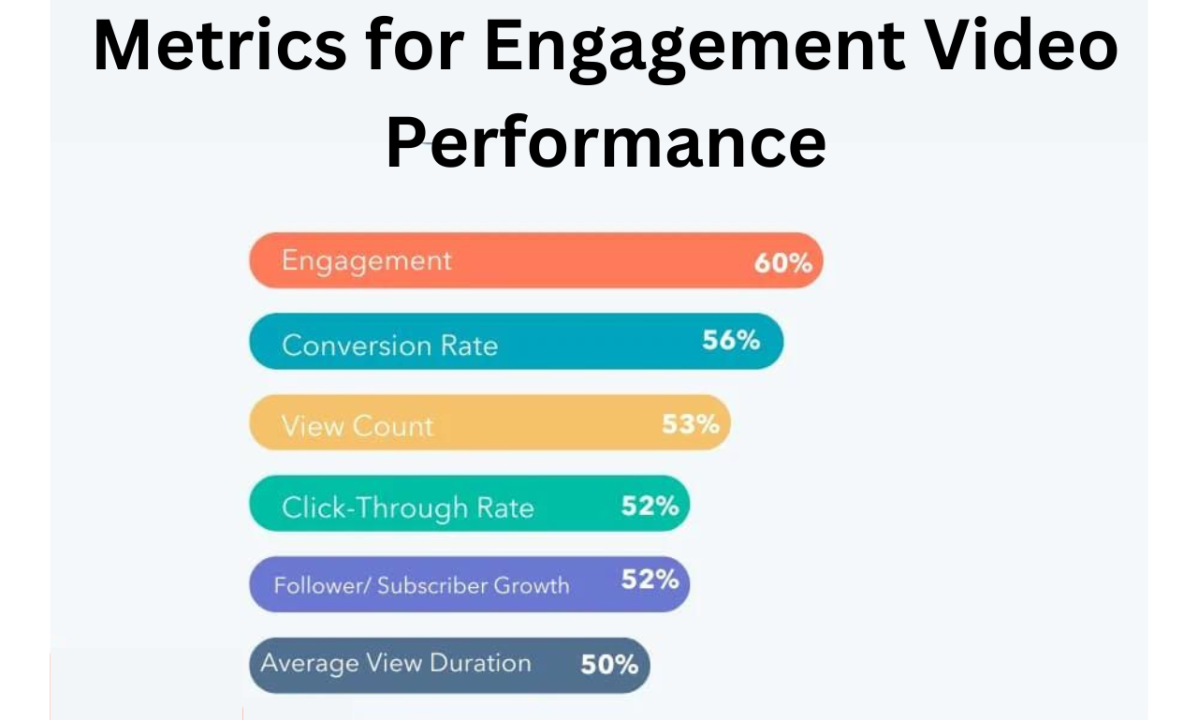
These tell you if your content is actually good or just... existing.
1️⃣ View rate: What percentage of people who see your video actually click play? LinkedIn shows your video to X people, Y people watch it. If your view rate is below 10%, your thumbnail or hook needs work.
2️⃣ Watch time percentage: Are people watching 10% or 90%? This is the real test. A video with 1,000 views but 15% average watch time is worse than one with 500 views and 70% watch time.
3️⃣ Completion rate: How many people watch all the way through? For short videos (under 60 seconds), aim for 50%+ completion. For longer content (3+ minutes), 30-40% is solid.
4️⃣ Drop-off points: Where exactly do people stop watching? Vidyard and Wistia show you heatmaps. If everyone bails at the 30-second mark, that's where your content needs fixing.
The benchmark that matters: If your average watch time is under 30%, your content isn't resonating. Fix the content before worrying about distribution.
LinkedIn-Specific Metrics
LinkedIn's algorithm rewards engagement. These B2B video marketing statistics tell you if the platform is amplifying your reach.
Post impressions: Total reach. How many people saw your video in their feed? Good baseline, but means nothing without engagement.
Engagement rate: (Likes + Comments + Shares + Clicks) ÷ Impressions. LinkedIn videos averaging 2-5% engagement rate are doing well. Over 5%? You've hit on something good—analyze why and do more of it.
Comments > Likes: Comments signal the algorithm that your content sparks conversation. One thoughtful comment is worth 10 likes for reach.
Shares: The ultimate signal. When someone shares your video to their network, LinkedIn interprets it as "this is valuable content" and shows it to more people.
Connection requests from video viewers: Are people watching your video and wanting to connect? Track connection acceptance rate before and after you started posting video consistently.
Profile views: Good video content drives people to check out who you are. Profile views should increase 20-50% when you're posting quality video regularly.
Track weekly: Screenshot your LinkedIn analytics every Monday. Compare month-over-month trends, not day-to-day noise.

Lead Generation Metrics (The Money Stuff)
This is where B2B video marketing statistics actually tie to revenue. Map the full journey.
The funnel you need to track:
👉 Impression → Engagement: What % of people who see your video engage with it? (Target: 2-5%)
👉 Engagement → Profile visit: What % of engagers click through to your profile? (Target: 10-20%)
👉 Profile visit → Connection request: What % send or accept connection requests? (Target: 15-30%)
👉 Connection → Message sent: What % of new connections receive your outreach message (with or without video)? (Track outbound volume)
👉 Message → Reply: What % reply to your message? (With video: 15-25%, without video: 3-8%)
👉 Reply → Meeting booked: What % of conversations turn into calendar invites? (Target: 20-40%)
👉 Meeting → Pipeline: What % of meetings create qualified opportunities? (Target: 30-50%)
👉 Pipeline → Closed revenue: Standard sales metric, but now you can attribute back to video.
Example in action: You post a case study video. It gets 5,000 impressions, 200 engagements, 40 profile visits, 15 connection requests. You accept all 15, send personalized video follow-ups. 6 reply. 3 book meetings. 2 become opportunities worth $60K total. That one video just influenced $60K in pipeline.
What Good Actually Looks Like
📌 Month 1 benchmarks (starting from zero):
- 2-4 videos posted
- 3,000-10,000 total impressions
- 2-3% engagement rate
- 5-10 new connections
📌 Month 3 benchmarks (building momentum):
- 10-15 videos posted total
- 15,000-40,000 total impressions
- 3-5% engagement rate
- 2-4 meetings influenced by video
📌 Month 6 benchmarks (seeing real ROI):
- 25-30 videos posted total
- 50,000-100,000+ total impressions
- 4-6% engagement rate
- 10-15 meetings per month where video was a touchpoint
- $50K-$200K in influenced pipeline (depending on deal size)
These are realistic numbers for someone posting consistently with decent content. Not viral hits. Just showing up, providing value, iterating based on what works.
The One Metric Rule
If you track only one thing from all these B2B video marketing statistics, make it this: meetings booked where video was a documented touchpoint in the buyer journey.
Everything else—views, likes, shares—is a leading indicator. Meetings are the lagging indicator that actually predicts revenue.
Track it religiously. Report it to leadership. Use it to justify continued investment in your B2B video marketing strategy.
Because at the end of the day, the question isn't "how many people watched our videos?" It's "how much pipeline did our videos create?"
How Cleverly Helps You Leverage B2B Video for LinkedIn Lead Generation
Look, creating video content is one thing. Turning it into actual meetings and revenue? That's a different game entirely.
This is where working with a B2B lead generation agency that actually gets video strategy makes all the difference.
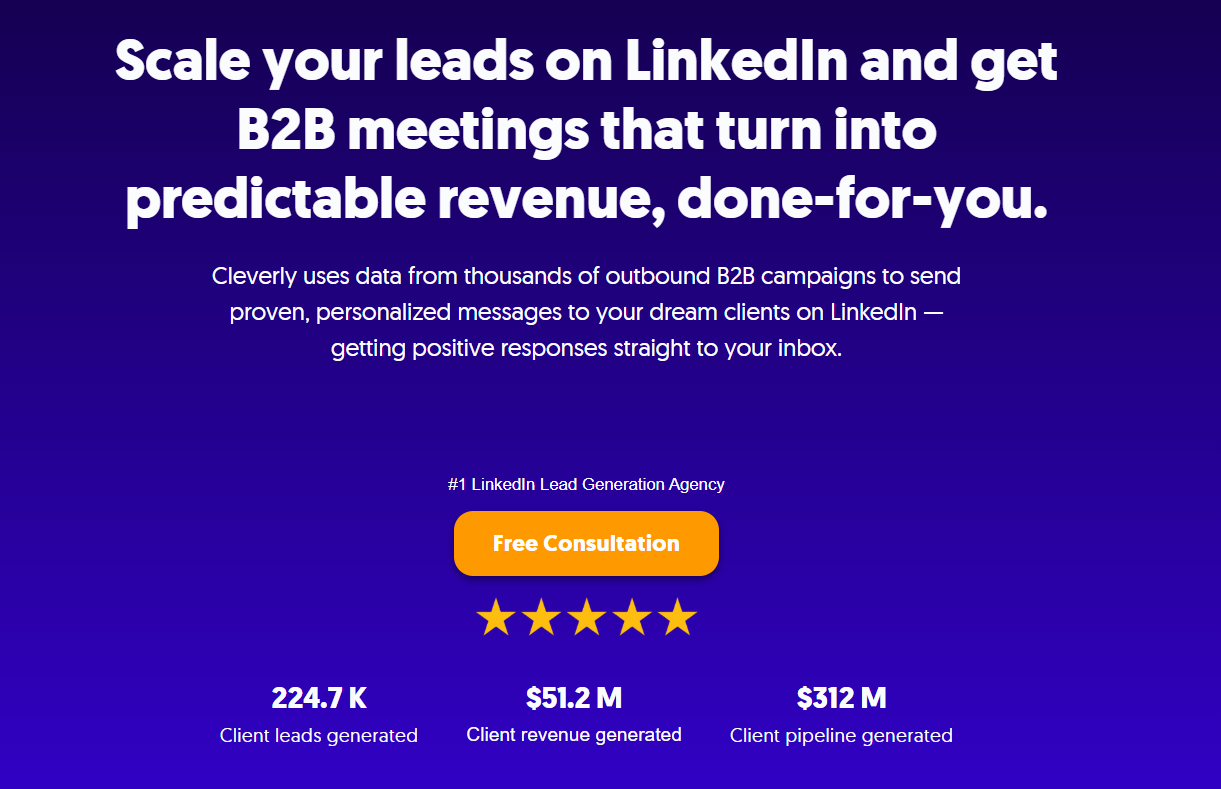
We've Been Doing This at Scale
At Cleverly, we've helped over 10,000 clients turn LinkedIn into a lead generation machine. Companies like Amazon, Google, Uber, PayPal, Slack, and Spotify trust us to book meetings with their ideal prospects.
The results? $312 million in pipeline revenue and $51.2 million in closed revenue.
Get done-for-you LinkedIn lead generation, starting at just $397/month!
Ready to Stop Guessing and Start Booking?
You can spend the next six months figuring out video + LinkedIn lead generation through trial and error. Or you can work with a team that's already done it 10,000+ times.
🤝 Let's talk! 🤝
Because at the end of the day, views and likes don't matter. Meetings do. And that's what we deliver.

Conclusion
B2B video marketing on LinkedIn is how decision-makers are consuming content, evaluating solutions, and deciding who to take meetings with.
You don't need a film crew or a massive budget. You need consistency, authenticity, and a strategy that connects video content to actual revenue—not just vanity metrics.
Start simple. Post your first video this week. Test what resonates. Double down on what works. Track the metrics that matter: meetings booked and pipeline created.
The companies dominating LinkedIn right now aren't the ones with the fanciest videos. They're the ones showing up consistently, providing real value, and making genuine connections at scale.
Your competitors are already doing this. Your prospects are already watching video content to make buying decisions.
The question isn't whether B2B video marketing works. The question is: when are you going to start using it to book more meetings?

Frequently Asked Questions



